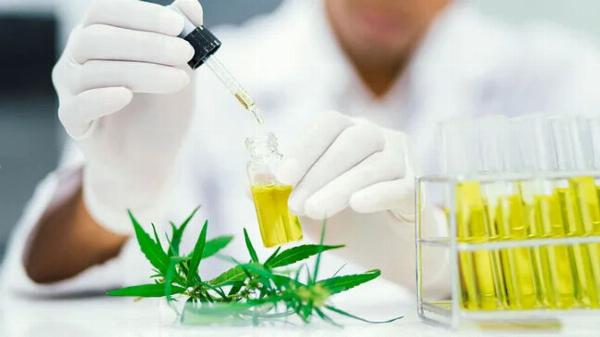Unveiling the Marvels of Drug Discovery and Development: A Journey into Pharmaceutical Product Development

Strong 8k brings an ultra-HD IPTV experience to your living room and your pocket.
In the vast landscape of modern medicine, the journey from a promising molecule to a life-saving drug is one filled with challenges, triumphs, and groundbreaking innovations. This journey, known as drug discovery and development lies at the heart of pharmaceutical product development, shaping the way we combat diseases and improve human health. In this blog, we embark on a fascinating exploration of this intricate process, delving into its key stages, methodologies, and the remarkable advancements driving the field forward.
Understanding Drug Discovery:
At its core, drug discovery is the art and science of identifying potential therapeutic compounds to target specific diseases or conditions. This stage often begins with intensive research, where scientists explore various avenues to uncover molecules with the desired pharmacological properties. These molecules could originate from diverse sources, including natural compounds, synthetic libraries, or even computational simulations.
One of the primary approaches in drug discovery is target-based screening, where researchers identify biological targets implicated in diseases, such as proteins or enzymes, and screen libraries of compounds to find those that interact with these targets. High-throughput screening (HTS) techniques play a crucial role here, allowing scientists to test thousands or even millions of compounds rapidly.
Another avenue gaining prominence is phenotypic screening, which focuses on identifying compounds based on their ability to alter disease-relevant phenotypes or cellular functions. This approach offers a broader perspective, often leading to the discovery of unexpected drug candidates and uncovering novel mechanisms of action.
The Journey of Drug Development:
Once a potential drug candidate is identified in the discovery phase, it undergoes rigorous evaluation and optimization in the drug development stage. This process encompasses preclinical studies, clinical trials, and regulatory approval, each demanding meticulous attention to safety, efficacy, and pharmacokinetics.
1. Preclinical Studies: Before a drug candidate can be tested in humans, it must undergo extensive preclinical testing to assess its safety profile and efficacy in animal models. These studies provide crucial insights into the compound's pharmacological properties, potential side effects, and optimal dosage regimens.
2. Clinical Trials: The transition from preclinical to clinical stages marks a pivotal phase in drug development. Clinical trials are conducted in multiple phases, each designed to evaluate different aspects of the drug's safety and efficacy in human subjects. Phase I trials focus on safety and dosage, Phase II trials assess effectiveness and further safety, while Phase III trials involve larger patient populations to confirm efficacy and monitor adverse reactions.
3. Regulatory Approval: Upon successful completion of clinical trials, pharmaceutical companies submit comprehensive data to regulatory agencies such as the FDA (Food and Drug Administration) in the United States or the EMA (European Medicines Agency) in Europe. Regulatory review ensures that the drug meets stringent standards for safety, efficacy, and quality before it can be approved for market distribution.
Innovations Driving Progress:
In recent years, drug discovery and development have witnessed remarkable advancements driven by technological innovations and interdisciplinary collaborations. Here are some notable trends shaping the landscape:
1. Precision Medicine: The era of one-size-fits-all medications is giving way to precision medicine, which tailors treatments to individual patients based on their genetic makeup, lifestyle factors, and disease characteristics. This personalized approach holds immense promise for optimizing therapeutic outcomes and minimizing adverse effects.
2. AI and Machine Learning: Artificial intelligence (AI) and machine learning algorithms are revolutionizing drug discovery by accelerating the identification of potential drug candidates, predicting their properties, and optimizing clinical trial designs. These computational tools analyze vast datasets with unprecedented speed and accuracy, helping researchers navigate the complex maze of molecular interactions.
3. Biopharmaceuticals and Gene Therapies: The rise of biopharmaceuticals, including monoclonal antibodies, recombinant proteins, and gene therapies, represents a paradigm shift in drug development. These innovative modalities offer targeted mechanisms of action, enhanced efficacy, and reduced toxicity compared to traditional small molecule drugs, opening new avenues for treating previously incurable diseases.
4. Drug Repurposing and Combination Therapies: Recognizing the limitations of traditional drug discovery approaches, researchers are increasingly exploring drug repurposing strategies and combination therapies to leverage existing medications for new indications or enhance therapeutic outcomes. This approach not only accelerates the development timeline but also maximizes the value of existing pharmacological agents.
Challenges and Future Perspectives:
Despite the remarkable progress in drug discovery and development, numerous challenges persist, ranging from scientific hurdles to regulatory complexities and economic constraints. Addressing these challenges requires continued investment in research infrastructure, interdisciplinary collaboration, and innovative approaches to accelerate the translation of scientific discoveries into tangible medical solutions.
Looking ahead the future of pharmaceutical product development holds immense promise, fueled by emerging technologies such as CRISPR gene editing, organ-on-a-chip models, and advanced bioinformatics tools. By embracing these innovations and fostering a culture of innovation and collaboration, we can unlock new frontiers in medicine and bring hope to patients worldwide.
Conclusion:
In conclusion, drug discovery and development represent a dynamic and multifaceted journey that combines scientific ingenuity, technological prowess, and unwavering dedication to improving human health. As we navigate this complex terrain, let us remain steadfast in our pursuit of transformative therapies that have the power to alleviate suffering, extend lives, and redefine the boundaries of modern medicine.
Note: IndiBlogHub features both user-submitted and editorial content. We do not verify third-party contributions. Read our Disclaimer and Privacy Policyfor details.


